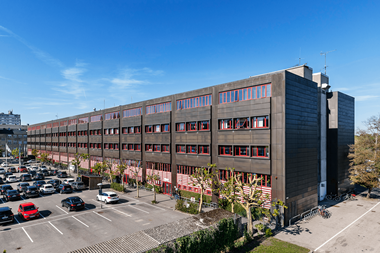US opportunistic funds have the potential to thrive under current market conditions - provided managers act prudently. Stephanie Schwartz-Driver reports
The severe correction in the capital markets since August 2007 has had pervasive effects in US real estate markets, but opportunity fund managers see opportunities in chaos and confusion. “We still think that opportunities arise when markets are in turmoil,” says Jeffrey Quicksilver, principal, Walton Street Capital, a Chicago-based manager that has invested or committed more than $3bn (€1.9bn).
“This creates interesting opportunities for us, but we have to adapt our strategies. That’s what we and a lot of our peers are doing,” he says.
Jason Mattox, executive vice-president at Behringer Harvard, the Dallas-based fund manager, agrees. “New and different opportunities are uncovered every day. It is a very good time to be running a real estate private equity fund and to be investing.”
As an asset class overall, private equity is faring well under constrained market conditions. During the first quarter of 2008, the amount raised by US private equity firms was up 32% over the same period in 2007, according to Dow Jones Private Equity Analyst: $58.5bn was raised in 81 funds, compared with $44.3bn in 68 funds the previous year.
Real estate is no exception, judging by some recent market moves. The Blackstone Group closed its latest real estate fund, with capital commitments totalling $10.9bn, an impressive total at what is conventionally thought to be a difficult time for fund raising.
This latest fund is the largest real estate opportunity fund raised to date.
Blackstone’s megafund illustrated a trend identified in the Ernst & Young report on real estate private equity issued last year, which noted that fund sizes have been consistently growing. Based on an Ernst & Young survey, the average size of funds raised from 2005 to 2007 was US$844m, up almost 80% from the average size of funds raised from 2001 to 2004.
Blackstone is confident that there are attractive investment opportunities to access. Speaking at the PREA Spring Conference in Boston in March, Jonathan Gray, senior managing director and co-head of Blackstone’s real estate group, asserted that, “there are more favourable risk-adjusted returns in the US today than there were a year ago”. Financing is tough, he noted, saying that, “now, not only for transitional assets, but even for regular assets if they are large enough, you can’t get loans”.
Interestingly, Gray also sees potential in the hospitality sector, which is expected to be hit harder by the global economic downturn. “Everyone is expecting it to be like after 9/11,” Gray said. “We are certainly seeing moderation, but it is still positive. We will see contraction, but not so draconian.” Blackstone acquired Hilton Hotels last July, adding it to an already substantial hospitality portfolio.
Mattox also sees the potential in the hospitality sector, with both turnaround and development opportunities. “A lot of traditional plays are still strong in the opportunistic space,” he says.
“However, one has to be very measured with the risks taken.”
Although some industry observers and industry participants expected that interest in private equity real estate would slow in the face of market uncertainty, this seems not to be the case. “This is purely anecdotal,” says John Jacobsson, managing partner at Apollo Real Estate Advisors, which has invested more than $7bn with an aggregate volume of more than $30bn. ” Around October or November last year, I assumed that pension funds and other institutional investors in property funds would be under pressure to slow down, but that did not happen.”
In fact, it is the mainstream investment opportunities that are attracting many private equity real estate funds. This is in keeping with the back-to-basics wind that is sweeping investment across the board. Current market conditions “are taking the higher leverage flash-in-the-pan investors out of the picture”, says Mattox. “This is good for us.”
There are some interesting historical parallels that may point the direction the market is going in, according to Jacobsson. “The market today looks like the market that caused the creation of opportunity funds in the early 1990s,” he said. “That was a really good time for us.”
The early 1990s saw a tightening of credit as banks clamped down on providing new loans. And there was economic slowdown - in 1992, the US was just coming out of recession, which had led to weakened property fundamentals.
Those are the similarities - but there are also some key differences that point to stronger conditions in the current downturn. For example, the US is not suffering from the level of over-building that was a legacy of the 1980s construction boom. In addition, today there are a lot of potential investors in the market with a lot of equity capital to invest in opportunistic funds. “These are really good attributes for being opportunistic and contrarian,” says Jacobsson.
Many opportunistic managers are eyeing distressed deals, and Apollo Real Estate is no exception. “What came out of the 1990s was a slew of distressed deals, and our expectation is that we will see a number of these,” says Jacobsson. Short-term debt maturities will create opportunities - Macklowe and Centro have already encountered distress.
Jacobsson stresses that his focus is on distressed capital structures, rather than distressed properties. “We are not hearing a lot about properties becoming distressed. There have not been enough bankruptcies or job losses yet.”
“Our focus is on investment opportunities created out of the credit crunch,” says Quicksilver. “There are opportunities to go to companies that own high-quality portfolios but that are facing financing issues,” he said. He is noting opportunities in terms of single-family homebuilding, as developers struggle to get access to construction financing. He also sees opportunities in the debt arena, getting existing securities at discount or alternatively in terms of origination.
It is interesting that opportunistic managers do not have to go out on a limb to find the returns they promise. In fact, says Jacobsson, “most firms are not going to take more risk or lower their return expectations either”.
Some niche sectors, which had been targets of private equity real estate investors during overheated market conditions, are paradoxically now less attractive. For example, senior housing was a target of Walton Street since 2003, when the market was really distressed. “At the time, compared to multi-family, the spread didn’t make sense - there was a 400-500bp difference between senior housing and multi-family,” he said. Today however, even in this sector cap rates are compressing.
Student housing, another opportunistic target in the past, is now “mainstream,” says Mattox. This view was confirmed by Allan Swaringen, of the Excelsior LaSalle Property Fund, which has recently taken a significant position in new student housing, particularly that located near the campuses of major state universities. The fund is capitalising on a trend that sees state universities trying to get out of providing student housing, choosing instead to free up the capital needed to run dormitories, and reallocating it towards funding research or better educational facilities.
“Some of our competitors have approached the sector as opportunistic, but they might have been disappointed,” he says. “A lot of opportunistic funds have pursued investments but they might have faced difficulty finding suitably high-yield prospects.”
Swaringen believes that student housing today plays a role in providing stable value, as a core to core-plus investment. It provides good long-term growth prospects, more like a sub-sector of the apartment market that benefits from having different drivers.
“Student housing is totally driven by enrolment,” says Swaringen. “While I would not say it was recession-proof, it is much less tied to the overall economy.”
Traditionally, the apartment sector is driven by the overall housing market - making this a good time, and Swaringen says that LaSalle is broadly very bullish on apartments right now. Student housing can be strong during economic downturns, because when there are fewer job opportunities, young people are more likely to defer entering the job market in favour of prolonging their studies.
Investors are not being tempted out of the US in search of higher returns promised by emerging markets. International opportunistic real estate investment is a given, believes Jacobsson. “That is a trend that has been going on for a couple of years, and it is not slowing down.”
“We never really felt that we had to look abroad,” says Quicksilver. “And in fact, a lot of people who turned their attention overseas because of pricing will start turning their attention back to the US.” Respondents to Ernst & Young’s survey agreed. They maintained that the US has the highest risk-adjusted return potential, greater than both India and China, and significantly greater than western Europe or Asia Pacific ex China and Japan.
Walton Street is active overseas, with around 25% of its business outside the US. Its focus is on emerging markets, such as India or Mexico, where it has offices. “India is a very attractive, if risky, investment market,” says Quicksilver, pointing out that the fund has $150m of equity there.
Mattox believes that international investment plays a role in any portfolio, insofar as “proper diversification extends to overseas investment”. That said, he still believes that there are plenty of competitive investment opportunities in US private equity real estate, which will both keep capital local and will in its own turn attract overseas investment. Jacobsson points out that the continuing weakness of the US dollar benefits sterling and euro denominated investors.
At the same time, those opportunistic investors who have been eyeing opportunities outside the US are benefiting from the same market turmoil as they are in the US.” What is happening in the US is not in a vacuum,” says Quicksilver. “There are some interesting opportunities in Europe.’
For the time being, however, demand for US real estate private equity remains strong, and the prospects are good. However, there are some red flags: Mattox points to declining US consumer confidence, as well as increasing commodity prices.
“Nonetheless, it is still a positive market, provided one is acting with caution,” he says.
At the moment, some investors are taking a wait-and-see approach, Quicksilver says.
“There is a significant amount of equity capital waiting on the sidelines, waiting to see what happens with the economy, and how financing comes back,” he says, adding that with the economy slowing, there has been some weakening in real estate fundamentals. Overall, though, he is looking forward to a more rational financing market going forward.

















